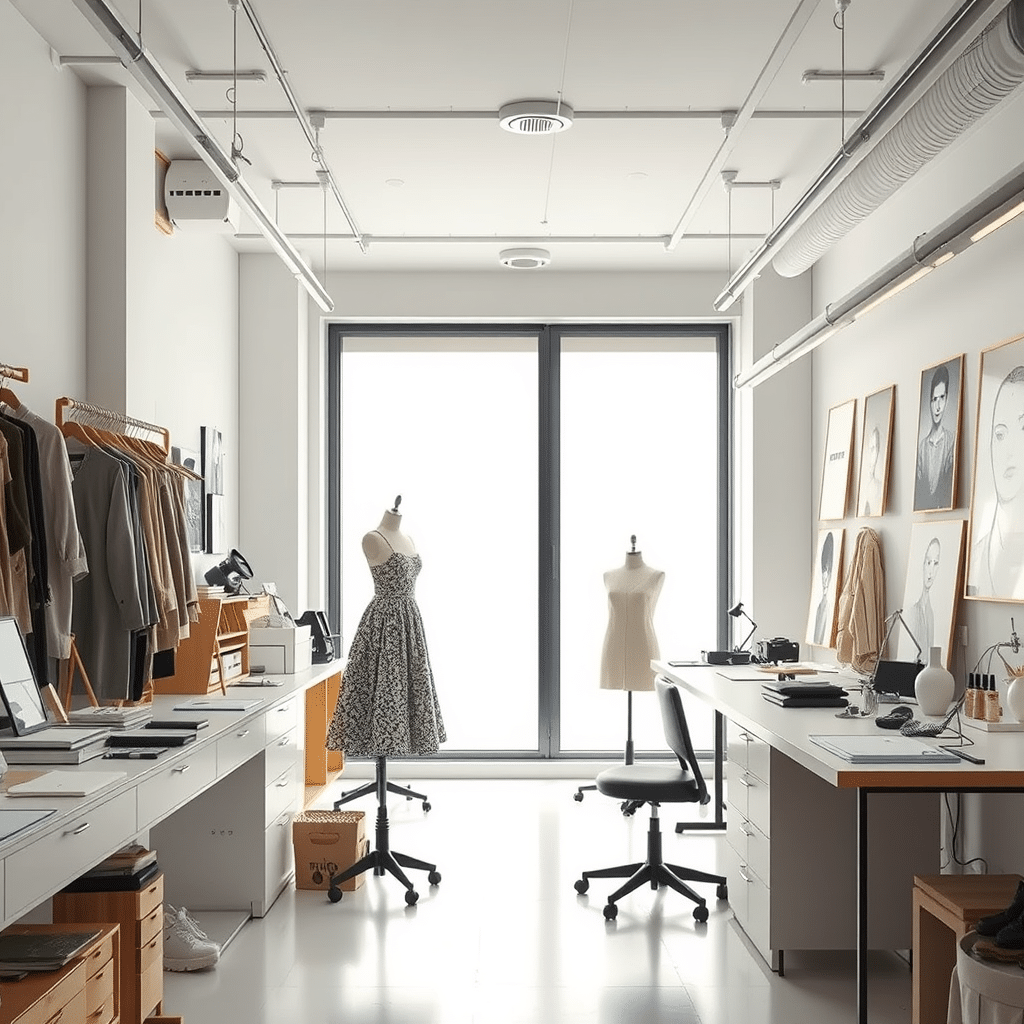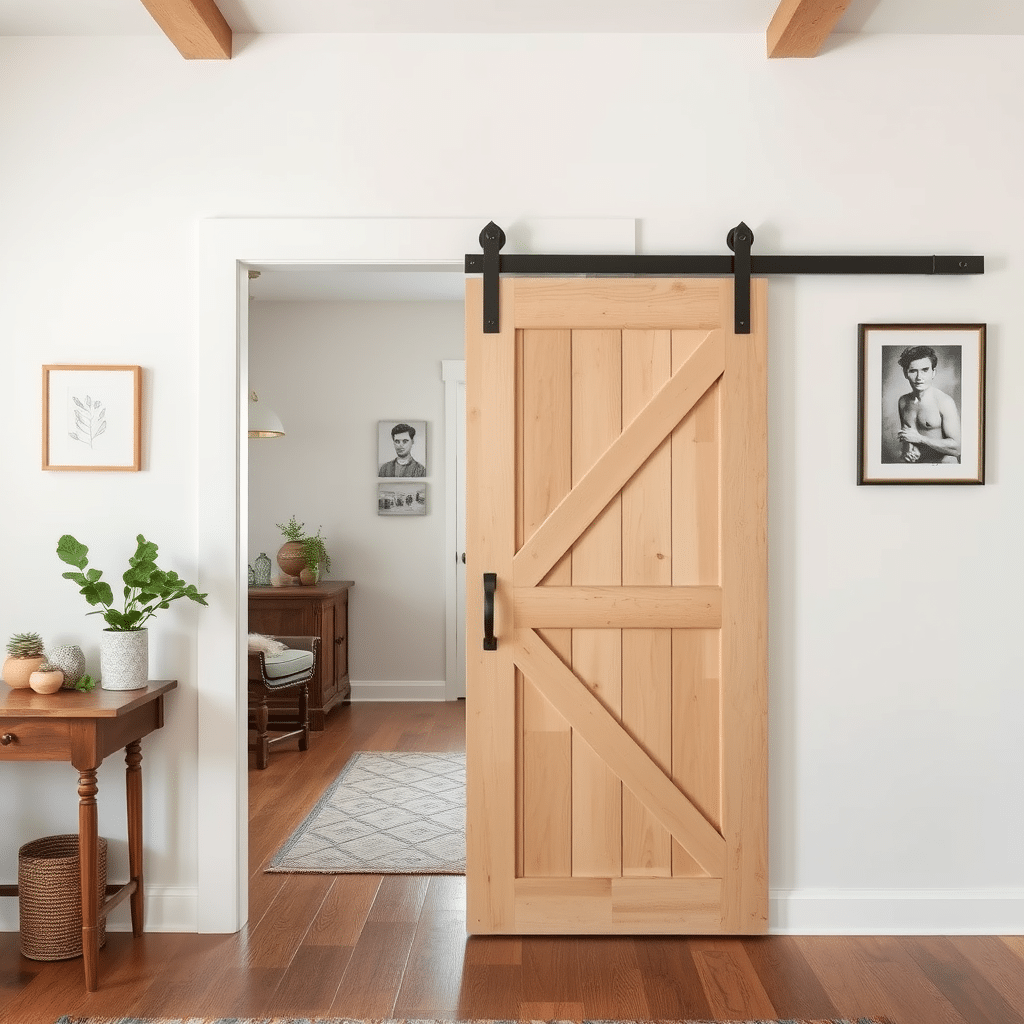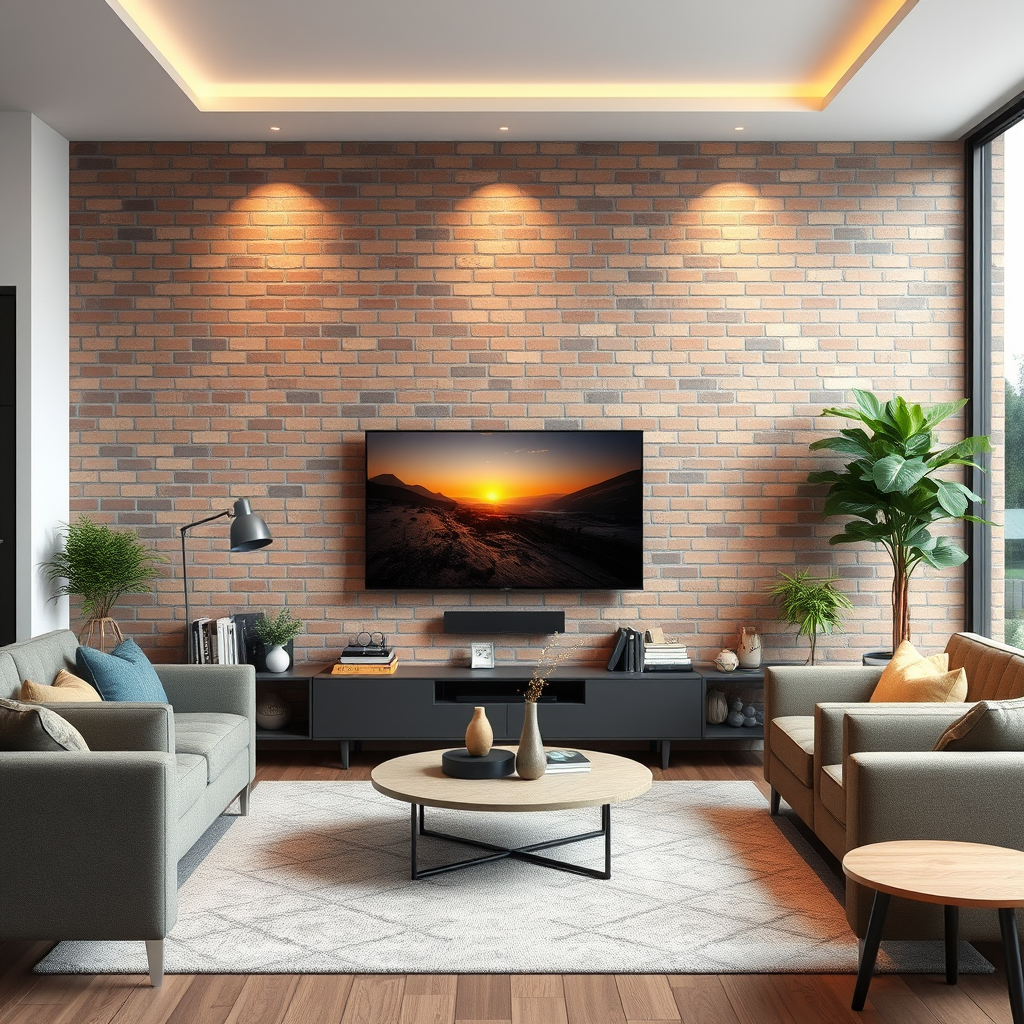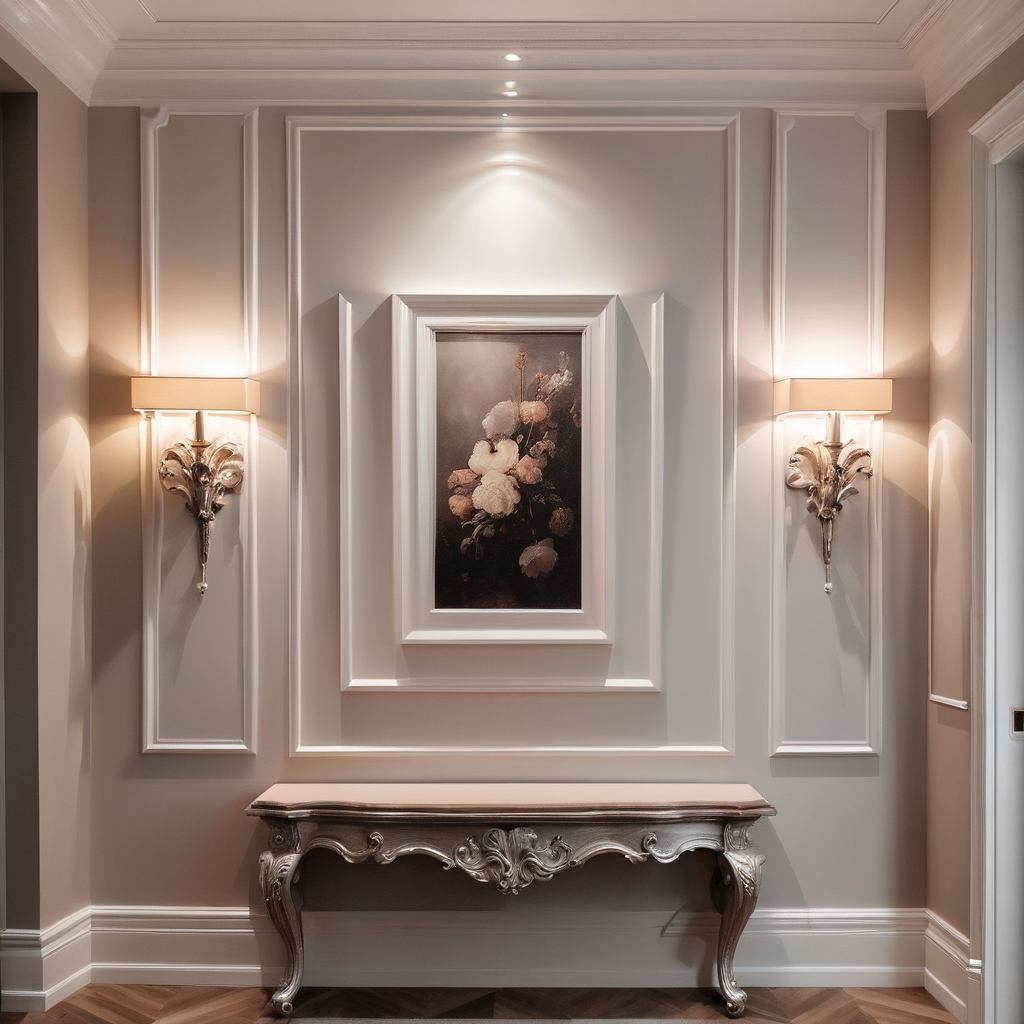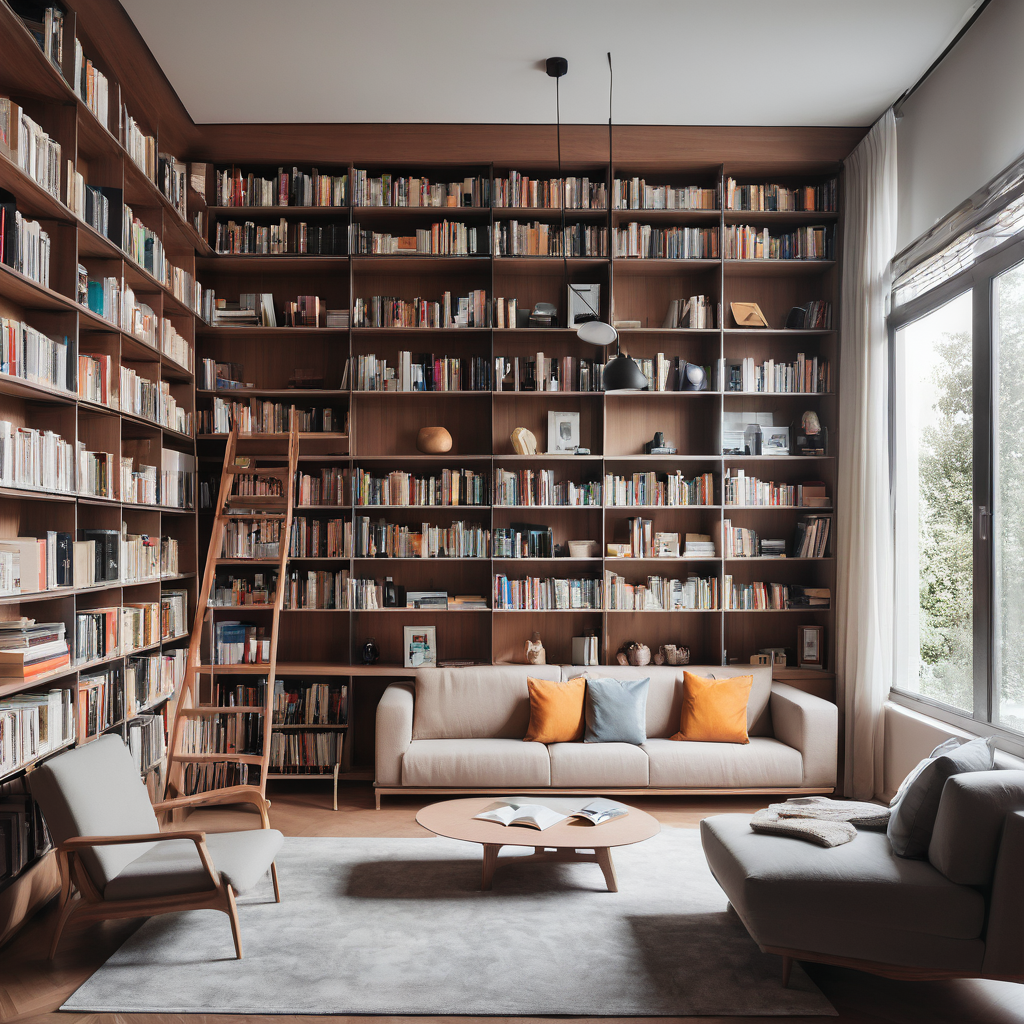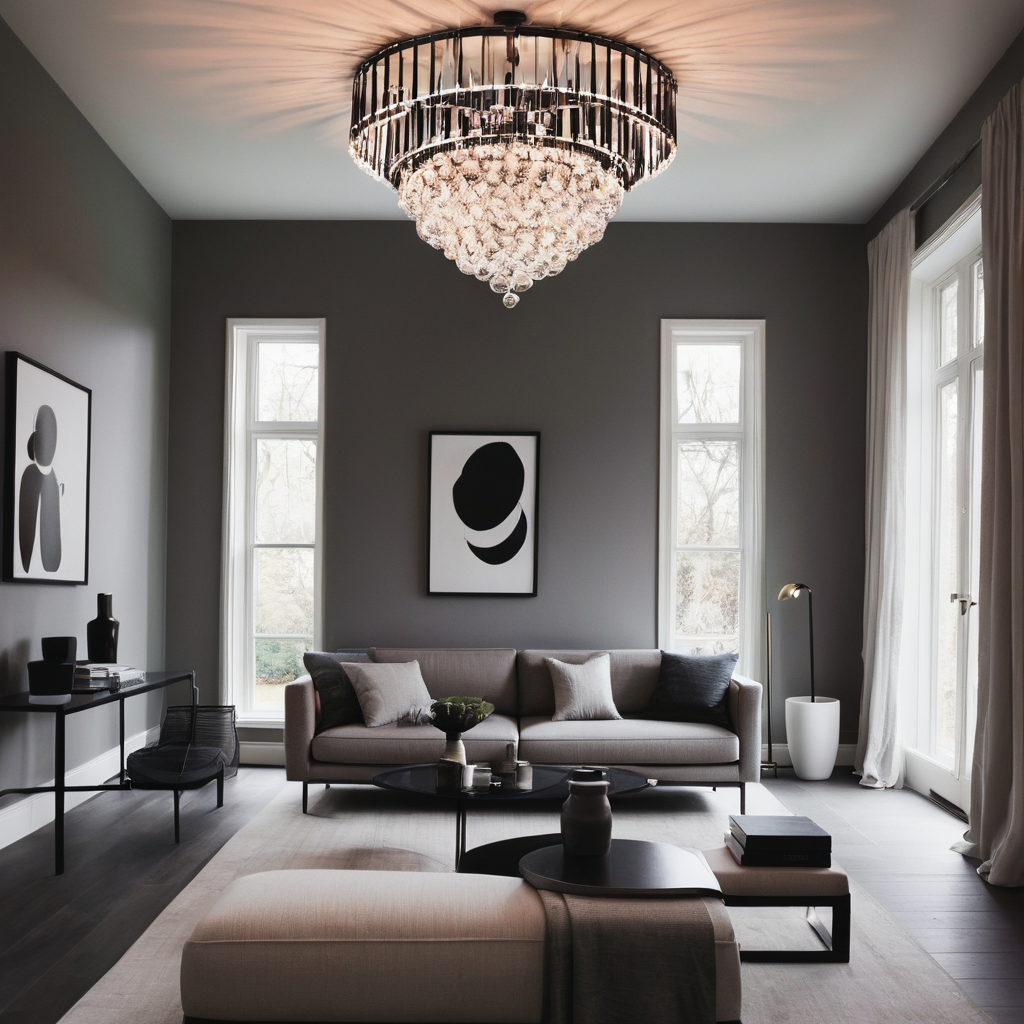Designing an atelier for a fashion designer is a complex task that balances aesthetics, functionality, and inspiration. An atelier, being both a workspace and a creative sanctuary, requires careful planning to meet the unique needs of fashion design. Here’s a guide to creating an effective and inspiring studio.
### Space Layout and Workflow
1. **Zoning**: Divide the atelier into distinct zones for different activities—design, pattern making, sewing, fittings, and storage. This separation helps maintain an organized workflow and minimizes disruptions between tasks.
2. **Flexible Layout**: Fashion design is inherently dynamic. Incorporate modular furniture and movable partitions to allow the space to adapt to different projects and needs. For instance, adjustable tables and movable racks can be reconfigured as needed.
3. **Lighting**: Proper lighting is crucial. Combine natural light with adjustable artificial lighting. Large windows provide daylight, essential for accurate color evaluation, while task lighting ensures precision during detailed work.
### Design and Aesthetic
1. **Inspiration and Style**: The atelier should reflect the designer’s personal style and creative vision. This can be achieved through color schemes, materials, and decorative elements that inspire creativity and align with the designer’s brand identity.
2. **Artistic Touches**: Incorporate elements that inspire—such as mood boards, fabric swatches, and artworks. These can be displayed on walls or dedicated boards to stimulate creativity and keep design ideas accessible.
### Functional Considerations
1. **Workstations**: Design workstations tailored to specific tasks. A drafting table for sketching, a cutting table with a grid for precision, and sewing machines with ample workspace are essential. Ensure that each workstation has sufficient storage for tools and materials.
2. **Storage Solutions**: Effective storage is key to maintaining an organized atelier. Use shelves, drawers, and cabinets to store fabrics, patterns, and tools. Consider clear storage solutions for easy visibility and accessibility.
3. **Fitting Area**: Allocate space for fittings, which should include a fitting room with a full-length mirror and adjustable lighting. A large, comfortable fitting area allows for accurate garment assessment and facilitates alterations.
### Ergonomics and Comfort
1. **Furniture**: Choose ergonomic furniture to ensure comfort during long working hours. Adjustable chairs, supportive worktables, and ample legroom contribute to a productive environment.
2. **Climate Control**: Ensure proper ventilation and temperature control. A comfortable working environment supports better focus and creativity. Air conditioning or fans may be necessary depending on the climate.
### Technology and Equipment
1. **Tech Integration**: Equip the atelier with the latest technology relevant to fashion design, such as high-quality sewing machines, pattern-making software, and digital tablets for design work. Ensure that electrical outlets and charging stations are conveniently located.
2. **Connectivity**: Good internet connectivity is essential for research, communication, and staying updated with fashion trends. Ensure the space is equipped with reliable Wi-Fi.
### Personal Touches
1. **Customization**: Personalize the space to reflect the designer’s personality. This could include custom-designed furniture, personalized artwork, or a signature color scheme.
2. **Comfort and Inspiration**: Include elements that provide comfort and inspiration, such as a cozy lounge area, inspirational books, or a sound system for playing music.
In conclusion, designing an atelier for a fashion designer involves creating a space that is not only functional and organized but also inspiring and reflective of the designer’s personal style. By carefully planning the layout, incorporating essential features, and adding personal touches, you can create a workspace that enhances creativity and supports the demanding nature of fashion design.

